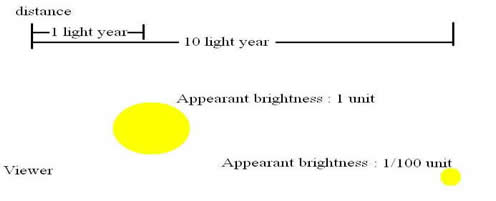2. Cepheid Variable Method
Most stars, like our sun, shine with an impressively constant brightness. But some stars, typically those in the late stages of life, vary their luminosities. Thay do so for subtly different reasons related to the stars' aging processes (and consequent diminishing supply of the 'fuel' that makes stars shine).
These different processes produce different patterns of change in the stars' light output. Cepheid variable stars change their brightnesses in a cyclic manner. The pattern of their variation repeats regularly and predictably.
If that star took the same amount of time to pass throught its regular cycle of brightness variation in 3.5 days, for example - then the star must have the same luminosity as any other Cepheid variable star, whose period of variation also equals 3.5 days.
Henrietta Swan Leavitt, Harvard College Observatory working on this, also found that longer the period, the greater the stars' luminosity would be.
Two Cepheid variables stars with different periods of light variation turned out to be stars with different amounts of energy output; two stars with the same periods variation had the same intrinsic brightness. After this work, whenevr astronomers have found to Cepheid variable with the same period of light variation, they could be almost certain that the two stars have the same energy output and the same luminosity (brightness).
Now, the apparent brightness of any object decreases in proportion to the square of its distance from the observer. Thus to make an object appear one ten thousandth as bright, you must move it hundredth times farther away (since 100*100=10000).

Unfortunately, for astronomers, eve with todays' largest telescopes, Cepheid variables can be seen as an individual stars only in a few galaxies closest to the Milky Way. Hence, the remainders of all other galaxies - the other few hundred billion galaxies that appear on photographic plates - cannot have their distances estimated by comparing individual Cepheid variable stars within the galaxies with the Cepheid much closer to us.
So, how can we estimate distances to any other galaxies.